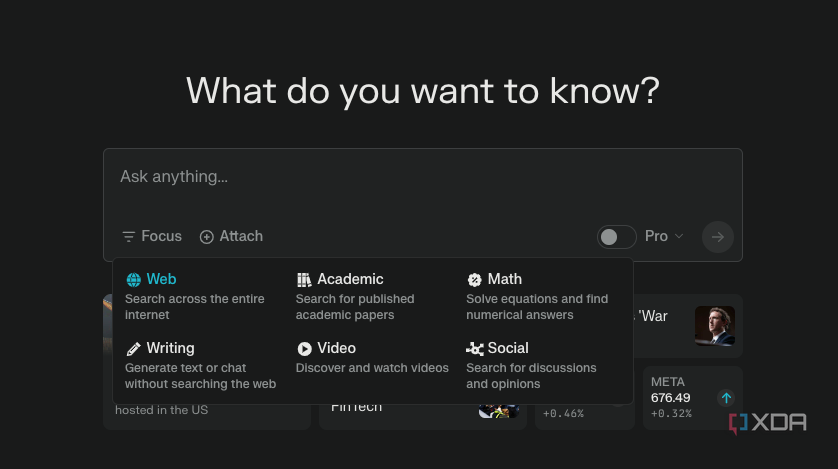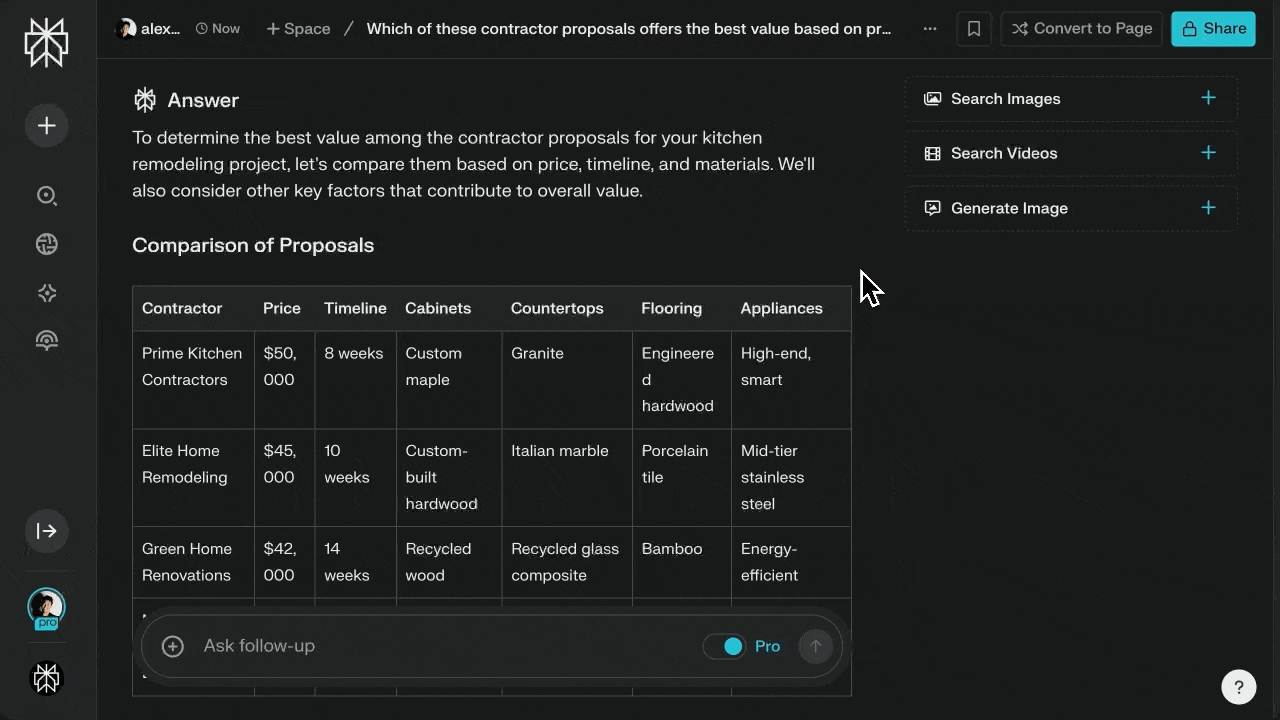Raise Your Grades: 10 Student AI Strategies for 2025 Success


Perplexity AI is a powerful AI search assistant that combines web search with AI synthesis to provide direct answers to your questions. Unlike traditional search engines that give you a list of links, Perplexity searches the web, reads the most relevant sources, and presents clear answers with citations.
While many users have discovered this helpful tool, most are only using its basic features. In this guide, we'll explore five powerful features that can transform how you research, organize information, and create content.

Focus Mode allows you to control where Perplexity pulls information from, dramatically changing the quality and perspective of the answers you receive.

Real-World Example: Asking "What are the benefits of cold showers?" with Academic Focus will give you scientifically-backed data. Using Social Focus will provide personal experiences from Reddit.
Spaces are like intelligent folders that keep your research organized by topic. Their real power comes from adding custom instructions that Perplexity will follow for every conversation within that space.

Advanced Tip: Spaces can be shared with up to five team members, making them perfect for collaborative research for marketing teams, student groups, or content creators.
Deep Research Mode transforms Perplexity into a comprehensive research assistant. For complex topics, it conducts multi-step research and synthesizes the information into a detailed, structured report with extensive citations.

Pages allow you to turn any Perplexity conversation into a polished, shareable web document. Instead of messy copy-pasting, Pages creates a clean webpage with proper formatting, sections, images, and citations, which you can then customize.

File uploads let you analyze your own documents (PDFs, Word files, etc.) directly within Perplexity. You can ask specific questions about a 50-page report and get direct answers without having to read the entire document manually, a process also known as AI PDF analysis.

PDF, Word, Excel, Text, and CSV files.
Create anonymous threads that don't appear in your history and expire after 24 hours. Perfect for sensitive research topics.
Choose different AI models for your queries, including GPT-4o, Claude 3.5 Sonnet, and Mistral Large. Different models excel at different tasks.
Get more in-depth answers by pulling from more sources. Free users get three Pro Searches per day.
| Feature | Perplexity | ChatGPT | Google Search |
|---|---|---|---|
| Real-time Information | Yes | Knowledge cutoff | Yes |
| Source Citations | Always | Sometimes | Links only |
| Focus Mode | Yes | No | Limited filters |
| Deep Research | Yes | Paid feature | No |
| Document Analysis | Yes | Yes | No |
Perplexity AI is revolutionizing how we find and process information online, but most users are only scratching the surface. By mastering Focus Mode, Spaces, Deep Research, Pages, and File Uploads, you'll transform your productivity and discover insights that would otherwise remain hidden.
While Perplexity excels at finding information, this guide shows you how to use Gemini Pro to synthesize that information into well-structured and insightful written content. A perfect next step after your research phase.
Explore a curated list of specialized AI tools designed specifically for the academic world. This guide dives deep into tools for literature reviews, citation management, and data analysis, complementing Perplexity's broader capabilities.
Ready to move from research to creation? Discover how Google's all-in-one platform can help you build apps, generate media, and collaborate in real-time, taking your AI-powered productivity to the next level.
Stop just searching and start researching. Pick one of the five features we've explored and apply it to your next project.
Try Perplexity AI NowPerplexity AI is an AI-powered search assistant that provides direct answers with citations by synthesizing information from web sources, unlike traditional search engines that primarily list links.
Focus Mode allows users to select specific source types, such as academic or social, to tailor search results, improving the precision and relevance of the information retrieved.
Spaces are customizable research folders where users can set specific instructions for Perplexity, shareable with up to five team members for collaborative research on projects like marketing or academic papers.
Deep Research Mode conducts multi-step research, creating detailed reports with citations by analyzing complex topics through planning, research, synthesis, and finalization phases.
Pages convert research conversations into formatted, shareable web documents with customizable sections and images, ideal for creating professional summaries or guides.
File Uploads enable users to analyze documents like PDFs or Word files by asking specific questions, extracting information, and comparing content with web data, streamlining research across industries.
Advanced workflows, like those for content creators or students, combine Deep Research, Spaces, File Uploads, and Pages to streamline research, organization, and sharing, such as using Academic Focus for literature reviews and Pages for presentations.
"
Comments
Post a Comment